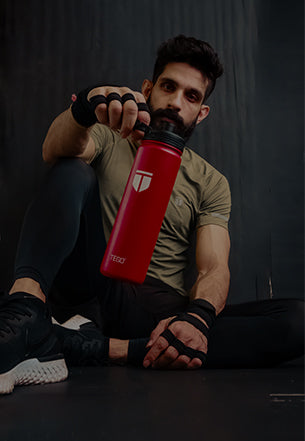Let’s be honest, if you’ve ever scrolled through your smartwatch stats and seen something like “VO₂ max: 42” pop up, your first reaction was probably somewhere between “Sounds fancy” and “Is that… good?”
You’re not alone.
VO₂ max has become one of those numbers that gets thrown around in fitness circles like protein shake recipes - often mentioned, rarely understood. But once you get to know what it really is (and what it says about your body), you’ll start to see it as more than just a geeky stat. It’s actually one of the most powerful indicators of your overall health and performance, and maybe even how long you’ll live.
Let’s unpack it.
So… What Exactly Is VO₂ Max?
VO₂ max, short for “maximal oxygen uptake,” is a measure of how much oxygen your body can use during intense exercise. It’s usually measured in millilitres of oxygen per kilogram of body weight per minute (ml/kg/min).
To put it simply: it tells you how good your body is at turning air into power.
Imagine you’re a car. VO₂ max is kind of like your engine size. A higher VO₂ max means your body is better at sucking in oxygen, pumping it through your bloodstream, and delivering it to your muscles so they can keep going without crashing into fatigue.
The more oxygen you can utilize, the more work you can do. Simple.
Of course, this doesn’t mean someone with a VO₂ max of 60 is automatically going to outrun someone with 45. But it does mean they have more potential to sustain a higher level of aerobic effort.
Why Should You Care? (Even If You’re Not Training for the Olympics)
Here’s the wild part: your VO₂ max isn’t just a “fitness” number. It’s a life number.
Multiple long-term studies have shown that your VO₂ max is a better predictor of mortality than cholesterol levels, blood pressure, or even smoking status.
One massive meta-analysis (Kodama et al., 2009) looked at over 100,000 people and found that even small increases in VO₂ max were associated with significant drops in risk of heart disease and early death.
Translation: If your VO₂ max is up, your risk of “anything going wrong” is down.
So no, this isn’t just something for triathletes and Tour de France hopefuls. It’s for everyday athletes, desk workers, weekend warriors, and “I just want to make it up the stairs without gasping” folks.
How Do You Measure It? (And Can You Trust Your Watch?)
In a perfect world, you’d strap on a mask, hop on a treadmill, and go all out while scientists in lab coats cheer you on. That’s how a true VO₂ max test is done, a graded exercise test using gas analysis to measure how much oxygen you’re inhaling and exhaling.
But most of us don’t have a lab in our basement. So we rely on fitness wearables i.e. your Garmin, Apple Watch, WHOOP, etc.
These devices estimate VO₂ max using heart rate data and how your heart responds to exercise intensity. Are they accurate? Sort of.
Studies like the one by Giles et al. (2019) suggest they’re reasonably close, especially for tracking trends over time, but they can be off by 5-15% compared to lab testing. Think of them as your fitness horoscope: useful, directionally insightful, but not gospel.
Can You Actually Improve It? Or Is It Just the Luck of the Genetic Draw?
Ah, the age-old question: nature or nurture?
Genetics definitely play a role, elite endurance athletes tend to be born with naturally high VO₂ max levels. But the good news is you can absolutely improve it, and sometimes by a lot.
Studies (Montero & Lundby, 2015) show that nearly everyone responds positively to aerobic training, and some can see a 15-20% boost in VO₂ max with consistent effort. The magic lies in the type of training.
Your best bet? High-Intensity Interval Training (HIIT) and Zone 2 training.
-
HIIT is like shocking your system with short, brutal bursts of effort.
-
Zone 2 is that Goldilocks zone — not too easy, not too hard — where you can carry on a conversation but still feel like you're working.
Both build your aerobic engine. One’s the espresso shot; the other’s the slow drip.
What Does Your VO₂ Max Really Reveal About You?
Beyond bragging rights, your VO₂ max is a sneak peek into how efficiently your body works at the cellular level.
-
It reflects your cardiovascular capacity — how well your heart and lungs deliver oxygen.
-
It hints at your metabolic flexibility — how well you burn fuel (fat or carbs).
-
It even says something about your recovery ability and mitochondrial health.
One fascinating paper (Booth et al., 2012) linked improved aerobic fitness to better insulin sensitivity, lower inflammation, and even slower biological aging. Yes, VO₂ max might just be your anti-aging cheat code.
Is There a “Good” VO₂ Max Number?
VO₂ max scores vary by age, sex, and fitness level. An elite cyclist might clock in at 70–85 ml/kg/min, while an average sedentary adult might be around 30–40.
According to the Cooper Institute and ACSM guidelines:
|
Age |
Men (Average) |
Women (Average) |
|
20–29 |
42–46 |
35–40 |
|
30–39 |
40–44 |
33–38 |
|
40–49 |
38–42 |
31–36 |
|
50–59 |
36–40 |
28–33 |
|
60+ |
32–36 |
25–30 |
But here’s the thing: it’s less about where you start and more about your trend over time. Are you improving? Holding steady? That’s what counts.
VO₂ Max Isn’t Everything (But It’s a Big Thing)
It’s worth noting that a sky-high VO₂ max doesn’t mean you’re invincible.
Other performance markers matter too, like lactate threshold (how long you can sustain a pace before fatiguing), movement efficiency, and mental resilience (aka your ability to keep going when your legs are screaming).
VO₂ max is just one piece of the fitness puzzle. But it’s a powerful one, a kind of North Star for how well your body uses its most precious resource: oxygen.
Final Take: Why You Should Give a VO₂ About Your VO₂ Max
Think of VO₂ max like the Wi-Fi speed of your body. The better it is, the smoother everything runs, whether that’s going for a run, playing with your kids, or surviving a fast-paced bootcamp class.
It’s not just about going faster or farther. It’s about improving the engine that drives everything else, from heart health to metabolic strength to long-term vitality.
So check your number. Track your progress. Train a little smarter. And breathe easy — you're investing in a longer, stronger life.







